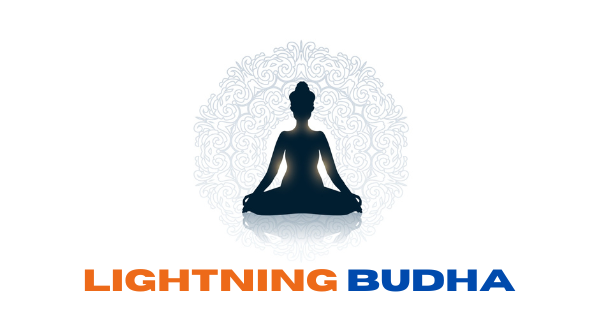Uncover the transformative path of “The Art of Letting Go” and experience spiritual surrender. Release attachments, find peace, and embrace personal growth. Explore the power of releasing attachments through this enlightening journey.
In our fast-paced and demanding world, we often find ourselves entangled in a web of attachments and expectations.

Whether it’s the desire for material possessions, the need for control, or the fear of letting go, these attachments can weigh us down and hinder our personal growth.
However, there is a transformative practice that can help us break free from the chains of attachment and find inner peace: spiritual surrender. In this article, we will explore the art of letting go and discover how embracing spiritual surrender can lead to profound liberation and a deeper sense of fulfillment.
Table of Contents
ToggleThe Art of Letting Go: Releasing Attachments through Spiritual Surrender
The Art of Letting Go refers to a philosophical and spiritual concept that emphasizes the practice of releasing attachments, surrendering control, and embracing a state of non-attachment.
It involves consciously and willingly relinquishing our grip on desires, expectations, outcomes, relationships, and any other attachments that can cause suffering and hinder personal growth.
Letting go does not imply indifference or giving up on goals and aspirations. Instead, it is a process of accepting the impermanence and unpredictability of life, recognizing that clinging to attachments can lead to stress, dissatisfaction, and emotional turmoil.

By letting go, we free ourselves from the burden of attachment, allowing us to live in the present moment, find inner peace, and cultivate a deeper sense of contentment and joy.
The art of letting go encompasses various practices and perspectives, including acceptance, forgiveness, detachment, trust, gratitude, and self-compassion. It involves examining our beliefs, fears, and desires and consciously choosing to release those that no longer serve our well-being or align with our authentic selves.
Through letting go, we become more attuned to our intuition, gain clarity about our values and priorities, and open ourselves up to new possibilities and growth.

Letting go is not a one-time event but an ongoing process that requires self-awareness, mindfulness, and the willingness to confront and transcend our attachments. It is a journey that invites us to explore our relationship with control, confront our fears of uncertainty, and embrace the wisdom of surrendering to the flow of life.
Ultimately, the art of letting go empowers us to live more authentically, find inner freedom, and experience a profound connection with ourselves and the world around us.
1. The Power of Letting Go:
Letting go is not a sign of weakness; rather, it is an act of courage and self-empowerment. When we release attachments, we create space for new possibilities and growth.

The power of letting go lies in its ability to liberate us from the burdens of the past, the limitations of attachments, and the grip of negative emotions.
Letting go is a transformative process that can bring about profound personal growth, emotional healing, and spiritual liberation.
1. Emotional Freedom:
Emotions often play a significant role in our attachments. When we hold onto past hurts, grievances, or negative emotions, they continue to affect us, often creating a cycle of pain and suffering. Letting go empowers us to release these emotional burdens and free ourselves from their grip.

By acknowledging and accepting our emotions, and then consciously choosing to let them go, we create space for healing, forgiveness, and emotional well-being.
Whether it’s clinging to past traumas, holding onto grudges, or being overly attached to certain outcomes, emotional attachments can create suffering and hinder our spiritual growth.
2. Release of Attachments:
Attachments to people, possessions, outcomes, or identities can bind us and prevent us from experiencing true freedom and inner peace.
Letting go of attachments means releasing our dependence on external circumstances for happiness and fulfillment.

It allows us to detach from expectations, outcomes, and the need for control, opening ourselves to a more fluid and accepting perspective.
Releasing emotional attachments involves acknowledging and processing our emotions, practicing forgiveness, and cultivating compassion for ourselves and others.
3. Personal Growth and Transformation:
Letting go is an essential catalyst for personal growth and transformation. It invites us to step out of our comfort zones, confront our fears, and embrace change.

By releasing old patterns, beliefs, and self-limiting narratives, we create space for new possibilities, expanded awareness, and personal evolution.
4. Mindfulness and Presence:
Letting go requires us to be fully present in the moment. It encourages us to let go of regrets about the past and worries about the future, allowing us to anchor ourselves in the here and now.
Mindfulness is a powerful tool for letting go and cultivating spiritual surrender. By bringing our attention to the present moment, we can observe our attachments without judgment or resistance.

Mindfulness allows us to become aware of our thoughts, emotions, and sensations, creating a space for detachment and non-identification.
Through regular mindfulness practice, we develop the ability to let go with greater ease and grace. Through mindfulness, we can cultivate a deeper sense of peace, clarity, and connection.
5. Liberation from Control:
The power of letting go lies in the liberation from the illusion of control. We often cling to the belief that we can control every aspect of our lives, which can lead to stress, anxiety, and disappointment when things don’t go as planned.

By surrendering the need for control and embracing the natural flow of life, we experience a newfound sense of freedom, ease, and trust.
6. Spiritual Awakening:
Letting go plays a significant role in spiritual growth and awakening. It invites us to surrender our ego-driven desires and attachments, allowing us to connect with a higher power or a deeper sense of consciousness.
Through the process of letting go, we can experience a profound connection with the divine, an expansion of our awareness, and a sense of unity with all that is. At the heart of spiritual surrender is the act of surrendering to the divine, however, one may conceive it.
This surrender is an act of faith and trust, allowing us to let go of our limited perspective and embrace the wisdom and guidance of a higher power. Surrendering to the divine brings us a sense of peace, purpose, and connectedness.

In summary, the power of letting go lies in its ability to free us from the past, release attachments, foster personal growth, cultivate mindfulness, liberate us from the need for control, and facilitate spiritual awakening.
It is a transformative practice that empowers us to live more authentically, embrace change, and find inner peace and fulfillment.
Letting go allows us to live in the present moment, free from the burdens of the past or anxieties about the future. It opens the door to self-discovery and enables us to embrace life’s uncertainties with grace and resilience.
2. Understanding Attachments:
Understanding attachments involves exploring the psychological and emotional bonds we form with people, things, ideas, and outcomes.
Attachments are rooted in our innate human tendency to seek security, belonging, and fulfillment through external sources. They can manifest in various forms, such as relationships, possessions, achievements, beliefs, and even our sense of identity.
Attachments often arise from our desires, expectations, and the belief that external factors are necessary for our happiness and well-being.

We may become attached to the idea of a perfect romantic partner, a particular career path, material possessions, or societal approval. These attachments can bring temporary satisfaction, but they also create vulnerability and dependence on external circumstances for our sense of self-worth and contentment.
While attachments can provide a sense of stability and comfort, they can also lead to suffering and limitation. When we become overly attached, we may fear loss, change, or failure.
We may experience anxiety, disappointment, and a constant need for validation. Attachments can prevent us from fully experiencing the present moment, embracing uncertainty, and realizing our true potential.

Understanding attachments involves developing awareness of our attachment patterns and the underlying motivations and beliefs that drive them. It requires honest self-reflection and introspection.
By examining our attachments, we can gain insight into the fears, insecurities, and unmet needs that contribute to their formation.
By understanding attachments, we can begin to cultivate a healthier relationship with them. This involves recognizing that attachments are impermanent and subject to change. It means acknowledging that our happiness and fulfillment are not solely dependent on external factors, but are ultimately rooted in our inner selves.
The Role of Spiritual Surrender:
The role of spiritual surrender is to foster a deep sense of trust, acceptance, and alignment with a higher power, universal intelligence, or the divine.
It involves relinquishing our ego-driven desires for control, outcomes, and attachments, and instead surrendering to a greater wisdom and guidance.
Spiritual surrender acknowledges that there are forces beyond our individual will and understanding that shape our lives.

It is an invitation to let go of the illusion of complete control and to embrace the flow of life with an open heart and mind.
By surrendering, we recognize that there is a greater intelligence at play, and we willingly align ourselves with its rhythm and purpose.
The role of spiritual surrender is multifaceted and encompasses several aspects:
1. Trust and Faith:
Surrender involves accepting the present moment as it is, without judgment or resistance. It means embracing the flow of life and relinquishing the need to constantly swim against the current.
Through surrender, we allow life to unfold naturally, trusting that the right circumstances and opportunities will arise when the time is right. Letting go requires trust in ourselves and the unfolding of life.
It means relinquishing the need for total control and surrendering to the natural rhythms and intelligence of the universe.

Trusting the process allows us to surrender our worries, doubts, and fears, knowing that everything is unfolding as it should. This trust empowers us to navigate uncertainty with faith and resilience.
Surrendering spiritually means trusting in a higher power or a greater intelligence. It involves having faith that there is a purpose and order to the universe, even if we cannot fully comprehend it.
Through surrender, we let go of our need to control every aspect of our lives and place our trust in something larger than ourselves.
2. Letting Go of Attachments:
One of the fundamental teachings in spiritual traditions is the impermanence of all things. By understanding and accepting this truth, we can loosen our grip on attachments.

Spiritual surrender calls us to release attachments to outcomes, desires, and expectations. It means acknowledging that our limited perspective may not always align with the greater plan.
By letting go of attachments, we open ourselves up to possibilities beyond what our ego-driven desires may dictate, and we release the resistance and suffering that come from holding on tightly.
3. Detaching from Material Possessions:
In our consumer-driven society, it is easy to become attached to material possessions as a source of identity and happiness. However, true fulfillment lies beyond the accumulation of things.

Detaching from material possessions involves decluttering our physical space, practicing non-attachment to material wealth, and redirecting our focus towards experiences, relationships, and personal growth.
4. Inner Listening and Intuition:
Everything in life is transient, and clinging to what is passing only causes suffering. Spiritual surrender encourages us to connect with our inner wisdom and intuition.
By quieting the noise of our ego and surrendering to a deeper knowing, we can align ourselves with the guidance and insights that come from a place of higher consciousness.

Surrendering allows us to tap into this inner wisdom and make choices that are in alignment with our true selves. By embracing impermanence, we learn to appreciate the beauty of each moment without getting caught up in the desire for things to stay the same.
5. Gratitude and Grace:
Gratitude is a powerful antidote to attachment. By cultivating a grateful mindset, we shift our focus from what we lack to what we already have.
Gratitude helps us appreciate the present moment, fosters contentment and reduces the desire for external validation or material possessions.

It reminds us of the abundance of life and encourages us to let go of the constant striving for more. Surrendering spiritually involves cultivating gratitude for the blessings and challenges in our lives. It means acknowledging that even in difficult times, there is an opportunity for growth and learning.
By surrendering with grace and gratitude, we shift our perspective and open ourselves up to the abundance and beauty that surrounds us.
6. The Healing Power of Forgiveness:
Forgiveness is a vital aspect of letting go and releasing attachments. Holding onto grudges, resentment, or past hurts keeps us stuck in a cycle of suffering.

By practicing forgiveness, we free ourselves from the emotional burden and create space for healing and growth.
Forgiveness is not about condoning or forgetting; rather, it is a conscious choice to release the negative energy associated with the past and move forward with compassion and understanding.
7. The Practice of Self-Compassion:
Letting go requires kindness and compassion towards ourselves and others. It involves recognizing that we are human beings doing the best we can in each moment.
Self-compassion allows us to embrace our imperfections, learn from our mistakes, and forgive ourselves for past choices. By cultivating self-compassion, we create a foundation of love and acceptance from which we can let go and grow.

Overall, the role of spiritual surrender is to invite us into a state of surrendering our individual will to a higher power, trusting in the unfolding of life, and aligning ourselves with the greater wisdom and purpose of the universe. It is a transformative practice that allows us to find peace, clarity, and a deeper connection with ourselves and the world around us.
Conclusion:
The art of letting go through spiritual surrender is a transformative practice that can free us from the shackles of attachment and lead us to a deeper sense of fulfillment and inner peace.
By recognizing and releasing our attachments, embracing impermanence, cultivating mindfulness, and surrendering to the divine, we open ourselves to the abundant possibilities life has to offer.
Letting go is not an easy journey, but it is a worthwhile one that can bring us closer to our true selves and a more meaningful existence. So, take a deep breath, trust the process, and surrender to the art of letting go.



[…] The Art of Letting Go: Releasing Attachments through Spiritual Surrender […]
[…] The Art of Letting Go: Releasing Attachments through Spiritual Surrender […]
[…] The Art of Letting Go: Releasing Attachments through Spiritual Surrender […]
[…] The Art of Letting Go: Releasing Attachments through Spiritual Surrender […]
[…] The Art of Letting Go: Releasing Attachments through Spiritual Surrender […]
[…] The Art of Letting Go: Releasing Attachments through Spiritual Surrender […]
[…] The Art of Letting Go: Releasing Attachments through Spiritual Surrender […]
[…] The Art of Letting Go: Releasing Attachments through Spiritual Surrender […]